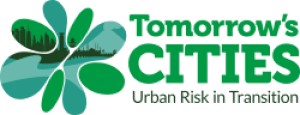Reducing the vulnerability of tomorrow’s cities
Of the area expected to be urbanised by 2030, 60% is yet to be built. That gives us a golden opportunity to design hazard-resilient cities for our future – if we act now.
The challenge
Cities in low-to-middle income countries already expose more than two billion people to floods, fires, earthquakes, landslides and volcanoes. That figure is expected to double by 2050.
When disasters strike, the way cities are designed shapes who is affected and by how much. Poorly planned urbanisation presents a disproportionate risk to vulnerable populations, threatening to cancel out development gains and drag communities back into cycles of debt and poverty.
If we’re serious about achieving sustainable urban development that leaves no one behind, we need to ensure disaster risk management is integrated into the planning and building of tomorrow’s cities.
What we're doing
We’re playing a key role in a major collaborative effort involving 12 UK research organisations and 42 global partners across four cities – Quito, Nairobi, Istanbul and Kathmandu – to engage communities, coordinate research and inform decision-making about urban hazard risk management.
As an interdisciplinary team, we’re focusing predominantly on Quito, the fast-growing capital of Ecuador and a potential hazard hotspot. Combining local knowledge with our own research expertise, our work will include utilising drone photography to engage communities and help map the movement of flow hazards, investigating how tropical rainfall leads to regular, localised landslides in built environments, establishing soil and material datasets to support our research and exploring how to reduce the social vulnerability that multiplies the impacts of hazards.
How it helps
This five-year project provides a once-in-history opportunity to reduce disaster risk for the poor in tomorrow’s cities. We’ll work alongside local people in quickly developing urban areas so that they can plan for, prevent and respond to the multiple hazards that threaten their communities.
In Quito, for example, once we’ve mapped the movement of water and flow hazards, citizens will be able to mitigate the threats they pose using early warning systems and preparedness plans based on co-created knowledge. We’ll also be collaborating with local institutions to train the next generation of researchers and empowering local policymakers to make more integrated, informed and inclusive, risk-based decisions about future construction projects.
Investigators
Dr Jeremy Phillips, School of Earth Sciences
Dr Liz Holcombe, Faculty of Science and Engineering
Dr Ryerson Christie, School of Sociology, Politics and International Study
Dr Paul Vardanega, Department of Civil Engineering
About Tomorrow's Cities
Tomorrow’s Cities is the UK Research and Innvovation (UKRI) Global Challenges Research Fund (GCRF) Urban Disaster Risk Hub—a five-year global interdisciplinary research hub. We are one of 12 UKRI GRCF Hubs funded through an UKRI Collective Fund award, as part of the UK AID strategy to put research at the heart of efforts to deliver the United Nation’s Sustainable Development Goals (SDGs).


Investigators: Dr Jeremy Phillips, Dr Liz Holcombe, Dr Ryerson Christie, Dr Paul Vardanega
